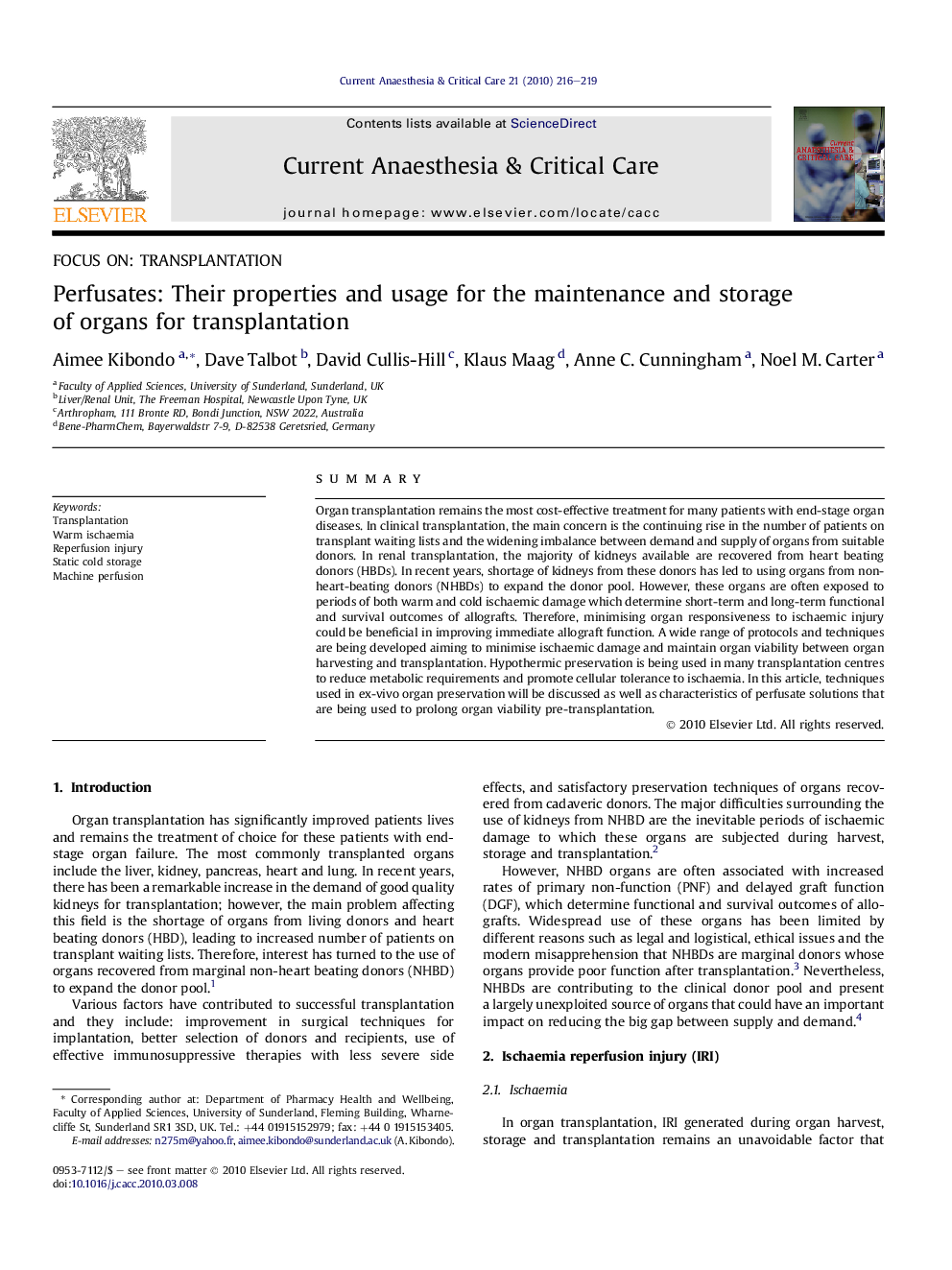| Article ID | Journal | Published Year | Pages | File Type |
|---|---|---|---|---|
| 2607869 | Current Anaesthesia & Critical Care | 2010 | 4 Pages |
SummaryOrgan transplantation remains the most cost-effective treatment for many patients with end-stage organ diseases. In clinical transplantation, the main concern is the continuing rise in the number of patients on transplant waiting lists and the widening imbalance between demand and supply of organs from suitable donors. In renal transplantation, the majority of kidneys available are recovered from heart beating donors (HBDs). In recent years, shortage of kidneys from these donors has led to using organs from non-heart-beating donors (NHBDs) to expand the donor pool. However, these organs are often exposed to periods of both warm and cold ischaemic damage which determine short-term and long-term functional and survival outcomes of allografts. Therefore, minimising organ responsiveness to ischaemic injury could be beneficial in improving immediate allograft function. A wide range of protocols and techniques are being developed aiming to minimise ischaemic damage and maintain organ viability between organ harvesting and transplantation. Hypothermic preservation is being used in many transplantation centres to reduce metabolic requirements and promote cellular tolerance to ischaemia. In this article, techniques used in ex-vivo organ preservation will be discussed as well as characteristics of perfusate solutions that are being used to prolong organ viability pre-transplantation.
